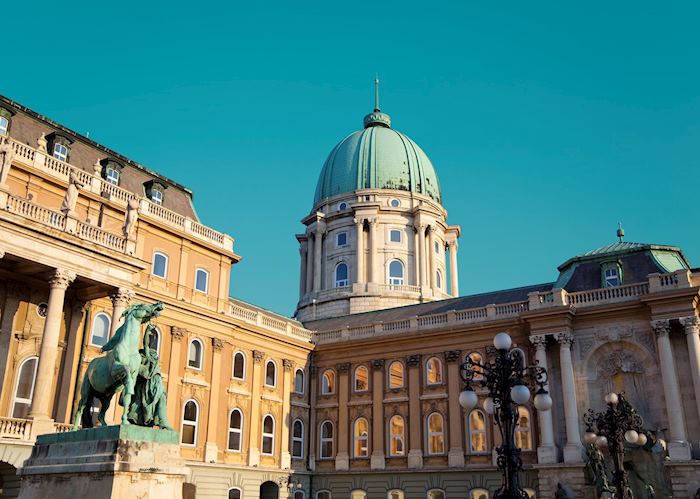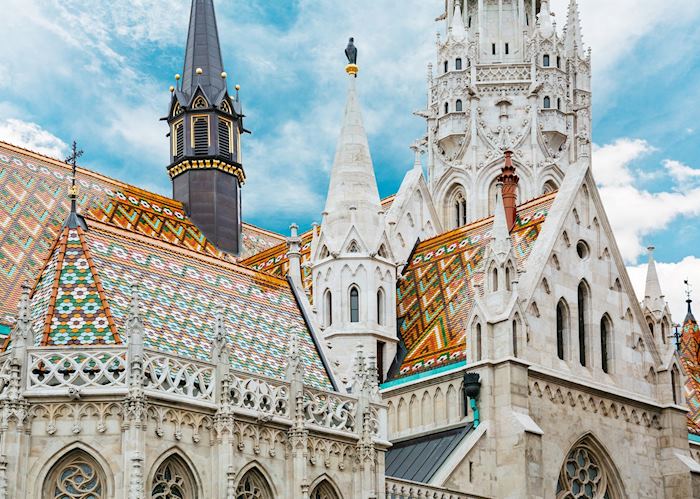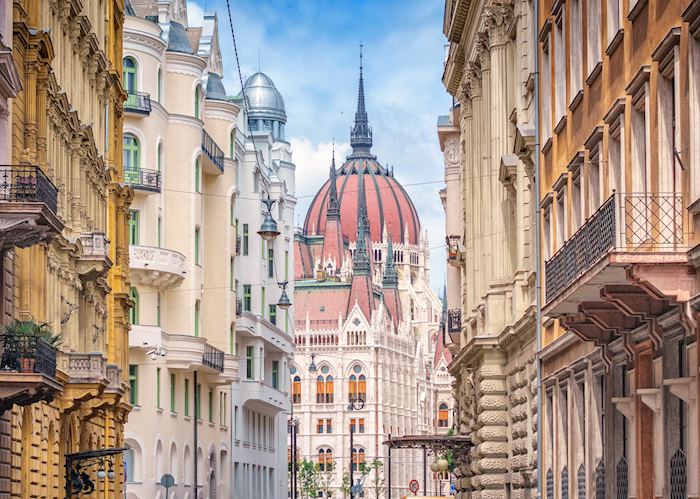Spend the day exploring both sides of Budapest on this tour of the city with a driver and guide. Led by your guide, you’ll discover the major highlights and some of the less-visited sights by car and on foot on either side of the Danube.
In the Castle District, on the Buda side of the river, you can visit Matthias Church, get views from Fisherman’s Bastion, and climb Géllert Hill before popping into one of the city’s signature bathhouses. Crossing the Chain Bridge to the Pest side of the city, you’ll visit the Dohány Street Synagogue, the National Museum, and the Hungarian State Opera before enjoying some traditional nibbles at the soaring Central Market Hall. You’ll also venture a bit further out from the old town.
This flexible tour can be adapted to your interests — for example, art enthusiasts might include a stop at the Museum of Fine Art.
Your guide will adapt the tour to your interests and the current conditions in the city, but you might start on the western bank of the Danube in Buda’s Castle District. Named after the 13th-century Royal Palace, built by Béla IV, this is the heart of the city’s historic and modern government and home to many of the city’s grandest buildings.
A highlight is Matthias Church, a neo-Gothic structure with parts that date back more than 500 years, though the bulk was built in 1896. In fact, many of the buildings that define Budapest were built in 1896, when the country celebrated 1,000 years since the Magyars arrived. When you visit, look up to see the intricately painted ceiling.
You can also walk along Fisherman’s Bastion, a neo-Romanesque folly, for the best views over Pest’s spire-pierced skyline. From there, venture into the Gellért Baths, arguably the most grandiose example of the city’s many thermal baths, with an arched glass ceiling, carved colonnade, and palm-shaded balconies.
Crossing the Chain Bridge to the Pest side, explore the city’s vibrant Jewish heritage at the Dohány Street Synagogue, sometimes known simply as the Great Synagogue. From there, visit the neoclassical Hungarian National Museum to explore the country’s history, and the opera house, considered by many to be the most striking in Europe.
Continue on to the Central Market Hall, a neoclassical edifice that houses hundreds of stalls selling local and traditional foods, including paprika, sausages, and Tokaji, one of Hungary’s most celebrated wines. Along the way, you could also stop to fortify yourself with cake at one of the city’s many celebrated coffeehouses.
Rejoin your driver to explore City Park, which is home to many important sights built during the 1896 celebration. Heroes Square is the city’s largest and most symbolically significant square, dominated by the Millenary Monument, a soaring pillar topped with a statue of the archangel Gabriel and surrounded by seven Magyar chieftains. Meanwhile, Vajdahunyad Castle showcases every single style of Hungarian architecture.
The last stop on the tour is likely to be the Széchenyi Thermal Baths, the largest spa complex in Europe and probably the most popular baths in the city. You can choose to return to your hotel, or end here and soak in one of the many thermal pools.
who's been there
-
617-223-4521617-223-4364
- Make an inquiry









